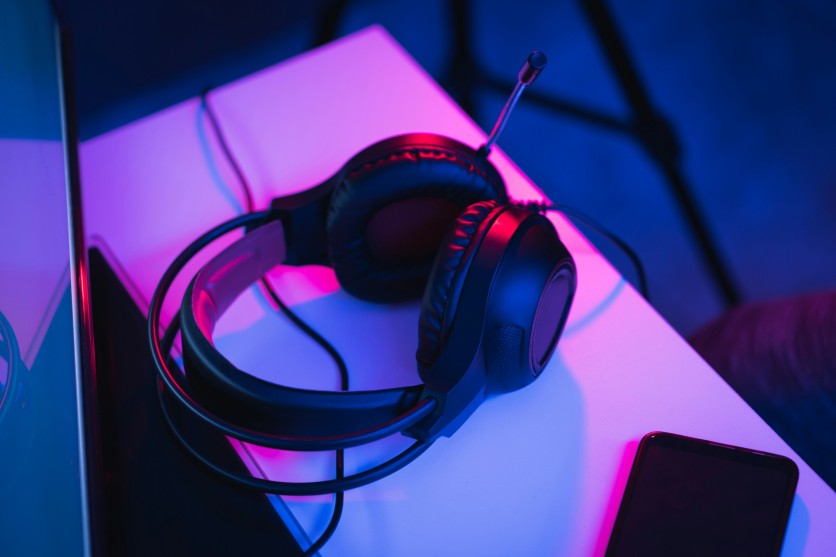High-quality audio is essential for an immersive and competitive gaming experience. Every footstep, gunshot, and environmental cue can affect performance, making clear, precise sound critical for both casual and professional gamers. By optimizing gaming sound settings and using EQ boost, players can emphasize important frequencies and reduce audio clutter, allowing them to react faster and stay aware of their surroundings. Proper audio setup also enhances the overall gaming experience, making virtual worlds feel more alive and engaging.
Beyond software adjustments, headset optimization, and the use of external audio gear, these factors play a major role in achieving the best in-game sound. Quality headsets with low latency, surround sound, and comfortable designs, combined with tools like external DACs and amplifiers, help deliver crisp, detailed audio. This guide provides practical strategies to improve your gameplay sound using EQ settings and external equipment, ensuring every session is both immersive and performance-ready.
Gaming Sound Settings: Using EQ Boost to Enhance Critical Audio
EQ boost allows gamers to emphasize or reduce specific frequency ranges, making it easier to hear essential audio cues in games. Footsteps, gunfire, and environmental sounds often fall within the mid-to-high frequency range, which is crucial for competitive awareness.
- Boost the mids and treble: Increasing frequencies between 1 kHz and 6 kHz enhances footstep clarity and directional cues.
- Lower the bass slightly: Reducing frequencies below 250 Hz can minimize unnecessary low-end rumble that masks important sounds.
- Software options: Programs like Windows Equalizer APO, SteelSeries Sonar, and headset-specific software allow precise EQ adjustments.
- Hardware EQ: Some gaming headsets and sound cards provide onboard EQ controls for real-time tuning without external software.
By customizing EQ settings, you can prioritize critical sounds while maintaining overall balance, thereby improving situational awareness in both competitive and casual gameplay.
Optimizing Your Headset for the Best Gaming Audio Experience
A high-quality gaming headset forms the foundation of a great audio setup. The physical design—including driver size, earcup shape, and materials—affects soundstage, clarity, and comfort for long sessions.
- External DACs and amplifiers: Adding a Digital-to-Analog Converter (DAC) or amplifier improves audio fidelity, reduces distortion, and delivers clearer, more detailed sound.
- Surround sound support: Headsets with virtual or true surround sound can enhance spatial awareness in FPS or action games, helping pinpoint enemy locations.
- Low latency and comfort: Features like low-latency wireless or wired connections prevent audio lag, while padded, ergonomic designs ensure long-term comfort.
- Durable and responsive drivers: Look for headsets with reliable drivers that maintain accuracy across the frequency spectrum.
Pairing EQ tuning with an optimized headset setup ensures that the audio you're hearing is precise, immersive, and consistent across games.
Additional Tips for Enhancing Game Audio with EQ and Equipment
Fine-tuning gaming sound settings and leveraging external gear can go beyond the basics with these practical strategies:
- Game-specific EQ presets: Customize EQ profiles depending on the type of game. Competitive shooters benefit from treble and midrange boosts to hear footsteps and gunfire clearly. At the same time, RPGs, adventure, or cinematic games may sound richer with slightly enhanced bass and surround effects for immersive environments.
- Regular calibration: Test sounds with in-game effects such as footsteps, gunfire, environmental cues, or dialogue to ensure your EQ settings highlight critical audio without overpowering other elements. Adjusting frequently helps maintain precision as games and updates change soundscapes.
- Volume management: Keep audio levels safe to prevent ear fatigue and long-term hearing damage, especially during extended gaming sessions. Consider using software or headset-based volume limiters for protection.
- Experimentation and personalization: Personal preference, headset quality, and game mechanics mean the "best" audio setup is unique to each gamer. Try different EQ boosts, virtual surround modes, and hardware adjustments to find the optimal balance.
- Combine software and hardware adjustments: Use EQ software, headset enhancements, and external DACs or amplifiers together to maximize audio clarity, depth, and spatial awareness.
- Monitor environmental impact: Minimize background noise and optimize your listening environment with padded rooms, desk placement, or closed-back headphones to fully appreciate subtle in-game sounds.
By integrating these techniques with proper EQ boost, headset optimization, and careful monitoring, gamers can create an audio environment that improves both awareness and immersion, giving a competitive edge and enhancing overall enjoyment.
Conclusion
Enhancing in-game audio requires a combination of gaming sound settings, EQ boost, and an optimized headset or external audio gear. By adjusting frequency ranges to highlight critical sounds, investing in quality headsets, and using DACs or amplifiers, gamers can achieve clearer, more immersive audio. Personalizing your setup through calibration and testing ensures the best balance between performance and enjoyment. Whether you're focused on competitive gameplay or immersive storytelling, these strategies allow you to hear every detail with precision. Prioritizing audio optimization enhances awareness, reaction time, and overall enjoyment, making your gaming sessions more engaging and effective.
Frequently Asked Questions
1. What EQ settings are best for hearing footsteps in games?
Boost frequencies between 1 kHz and 6 kHz while slightly lowering low-end bass to highlight footsteps.
2. Can cheap headsets produce good gaming audio with EQ adjustments?
Yes. EQ boost can compensate for some limitations, but the quality of the physical driver still affects clarity.
3. How does an external DAC improve gaming sound quality?
DACs convert digital signals to analog more accurately, reducing distortion and improving detail and clarity.
4. Is surround sound necessary for competitive gaming?
Not strictly, but virtual surround can enhance spatial awareness and make it easier to locate enemies in FPS and battle royale games.
ⓒ 2025 TECHTIMES.com All rights reserved. Do not reproduce without permission.





